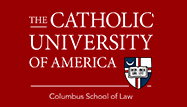Abstract
This article is an attempt to objectively examine and assess legal arguments made by Apple Inc. (Apple) and the Department of Justice (DOJ) concerning the DOJ’s use of the All Writs Act[1] (AWA) to require Apple to provide technical assistance to the DOJ so that it could access the encrypted data from the locked iPhone of Syed Rizwan Farook, commonly referred to as the San Bernardino shooter. The DOJ’s initial ex parte application focused on meeting the requirements of United States v. New York Telephone Co.[2] concluding the court order was authorized and appropriate. Apple not only argued the court exceeded its authority under various theories (e.g., because the Political Question Doctrine and/or the Communications Assistance for Law Enforcement Act[3] (CALEA) applied), but also that the court violated the separation of powers doctrine and the First, Fourth, and Fifth Amendments of the U.S. Constitution.
This article concludes the United States Government did not violate Apple’s First, Fourth and Fifth Amendment rights as writing code only instructs a computer how to function, therefore is not speech under the First Amendment; the FBI obtained a probable case search warrant and the owner of the device consented to the FBI’s search of the device; and Apple had not been denied its constitutional liberties, and had been given notice and an opportunity to be heard. In addition, given the personal nature of privacy rights under the Fourth Amendment and the common law, Apple is unable to assert either of those rights on behalf of third-parties. As to Apple asserting a violation of iPhone users’ constitutional right to privacy under the legal theory of jus tertii, it is unlikely Apple would be able to meet the legal requirements of jus tertii as the injury-in-fact to individual iPhones users is too speculative.
This article also concludes the Political Question Doctrine does not apply nor does CALEA apply as the statute is limited to data in motion while the encrypted data is data at rest. Furthermore, this article concludes the court did not exceed its jurisdictional authority when it issued the order nor was there a violation of the separation of powers doctrine given the court’s underlying jurisdictional authority of the probable cause search warrant. And, given this underlying jurisdictional authority and the AWA’s 215-plus years of history, the focus of the DOJ–Apple dispute centers on whether the court properly analyzed the three elements articulated in N.Y. Telephone Co.for requiring third party assistance. This article concludes the DOJ has the stronger argument for two of the three elements in that Apple is not too far removed from the matter and Apple’s assistance is necessary. Ultimately, the article determines the primary legal issue centers on the second element and whether the order is burdensome or unreasonable. This issue is directly tied to the question whether the order requires Apple to create a backdoor, a master key, and/or something equivalent to a master key. Because neither party provides definitions and the Declarations lack clarity as to how significant the modification to the Government Operating System/Software Image File (GovtOS/SIF) must be in order for it to work on other iPhones, it cannot be determined whether the order is unreasonable or burdensome. In order to resolve this issue, additional information is required, to include an accepted definition of backdoor and master key and the extent of the modifications to GovtOS/SIF such that it would work on other iPhones.
[1] 28 U.S.C. § 1651 (2015).
[2] United States v. N. Y. Tel. Co., 434 U.S. 159, 169 (1977).
[3] 47 U.S.C. §§ 1001-1010 (2015).
Recommended Citation
Julia P. Eckart,
The Department of Justice Versus Apple Inc. -- The Great Encryption Debate Between Privacy and National Security,
27
Cath. U. J. L. & Tech
1
(2019).
Available at:
https://scholarship.law.edu/jlt/vol27/iss2/3
Included in
Communications Law Commons, Constitutional Law Commons, First Amendment Commons, Intellectual Property Law Commons, Internet Law Commons, Other Law Commons, Privacy Law Commons, Science and Technology Law Commons

